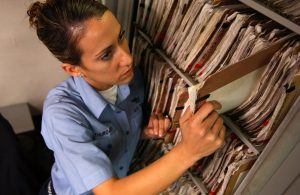 Now that VNA (vendor neutral archive) based clinical content systems are becoming more and more mainstream in UK hospitals, it’s worth reviewing what it is we’re looking for out of them – and how far we may need to go to get there.
Now that VNA (vendor neutral archive) based clinical content systems are becoming more and more mainstream in UK hospitals, it’s worth reviewing what it is we’re looking for out of them – and how far we may need to go to get there.
A lot of hospital CIOs have been taking the VNA route in the short term as a way to reduce the costs of running PACS and other image systems side-by-side. But more than a few of them have a longer term view in mind; using the VNA as a standards-based way of creating a single method for working with all sorts of data, not just images – as a back-door, but very pragmatic, way of getting to the electronic patient record promised by the National Programme but which hasn’t happened.
Making that latter aim a practicality and taking the next step beyond DICOM is where a lot of Trusts are paused right now. There’s interest in putting data in the VNA, as hospitals look to the Paperless NHS target of 2018-20 and want to make better use of patient data, keyed to the central NHS Patient Number.
We have been working with a number of Trusts that got that far, and have also been able to go further. We’d like to share some hints and tips about their learning about what to do next.
VNAs are ways to create platforms for the long-term archiving of DICOM format image data, typically as produced at volume in a hospital’s Radiology department. What’s been driving interest in them recently, as a by-product of the winding down of the National Programme for IT, is that there’s been a lot of ‘repatriation’ of DICOM imagery, but repatriation to this newer technology rather than to a standard PACS system. That’s partly due to an interest in collating all sorts of image files, so cardiology and echocardiogram and so on, into one place for clinician access, as a way to improve access but also better store and archive all this content.
So much dead data
So when making this move to a VNA, what we do know for certain? We know that you’re going to end up with a lot of data. For a start, it’s a question of volume. Few people – maybe only you and your team in IT? – will realise how much data has been accumulated.
So an important first step is cleaning that data up. Some of it can be summarised, some will be corrupt and can be deleted. There is clearly a project around data protection and retention and your policies around those issues. This is a great opportunity to get rid of dead data you don’t need any more, saving disk and tape cost at a stroke.
What you need to try and end up with is a purged set of data you know is important and needs to be accessible. Obviously, that has practical implications for both storage and access. The first storage element is IT’s job, but the second part is going to be about talking with internal stakeholders to identify just what departments want to put into the VNA and what they will want to pull out of it. You can start with Radiology as they will need access. But who else?
That’s where a VNA can start to add value. This is where other sorts of content, like stored photographs, videos, endoscopy files, patient medical records needs to be fed in. Getting that DICOM and non-DICOM content in one place is the objective, but it’s also a cross-enterprise, cross-departmental task that will need proper planning and co-operation around the Trust.
I’m going to put my neck out a bit and say that that’s where a lot of wheels are spinning right now. You have to have a strategy and it’s got to be one that all the stakeholders not just understand but buy in to. And to be honest, you can’t buy a strategy off the shelf from a vendor. To get the most out of a VNA, you are going to have to sit down and plan, with department heads, starting with Radiology but radiating out from there, about the best ways of handling all your data.
Next time we speak, let’s discuss what our Trust VNA customers are telling us is the best way to address that issue. The good news is that they have – and the interest in using a VNA as far more than a DICOM repatriation platform is spreading across the whole NHS.
Jason Scholes
Co-Founder
SynApps Solutions

